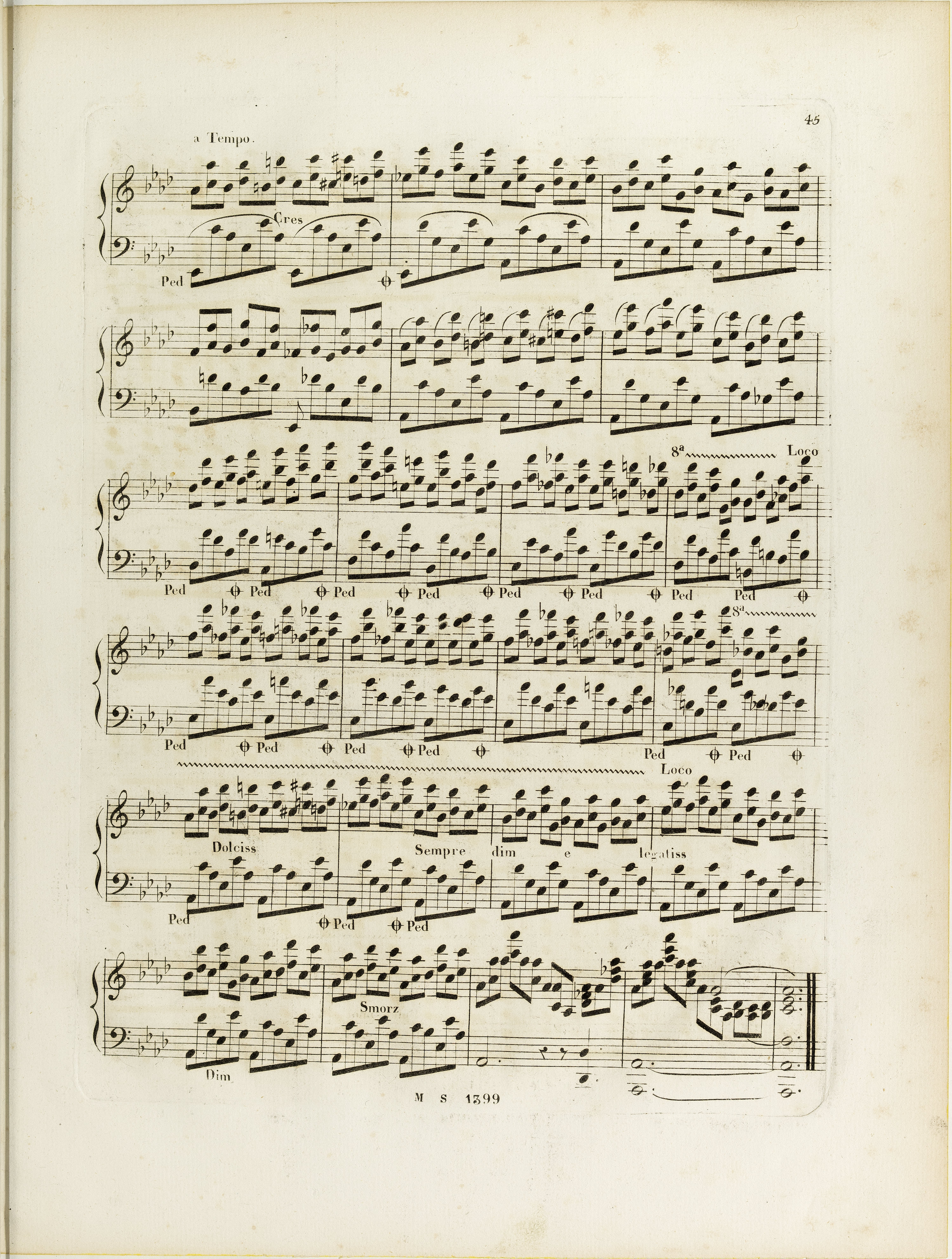



The main text includes the most natural version of A in terms of sound and pianistics. However, the exceptionally thick, spreading traces of the quill's strokes hinder the reading of A in this place, so the version of FE (→EE) differs significantly from the text of A. One's attention is drawn to the absence of stems extending some of the sounds (which can be however easily explained with an oversight) and the ambiguity related to it, as far as the meaning of the tie combining the last a in bar 76 with a relevant semibreve in bar 77 is concerned (in GE both the slur and the semibreve were omitted, which can be a mistake or a revision). The c1 note on the penultimate quaver also raises doubts – the engraver of FE (→GE,EE) could have discerned it on a thick and slightly bulging ledger line, used to write the a
in bar 76 with a relevant semibreve in bar 77 is concerned (in GE both the slur and the semibreve were omitted, which can be a mistake or a revision). The c1 note on the penultimate quaver also raises doubts – the engraver of FE (→GE,EE) could have discerned it on a thick and slightly bulging ledger line, used to write the a note. This version, even if it was not created as a result of Chopin's proofreading intervention, however, could have been accepted by him at the time of going over FE.
note. This version, even if it was not created as a result of Chopin's proofreading intervention, however, could have been accepted by him at the time of going over FE.
Compare the passage in the sources »
category imprint: Graphic ambiguousness; Interpretations within context; Differences between sources
issues: Inaccuracies in FE, Authentic corrections of FE, Uncertain notes on ledger lines
notation: Pitch





